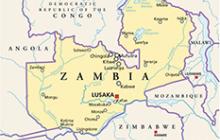A Quick Word With: Hannah Ring, Senior Researcher
The First 1000 Most Critical Days (MCDP) program was designed to provide women in Zambia with a host of maternal and infant health supports. In this Q&A, Hannah Ring provides insight into how the program worked and the challenges of bundling multiple interventions.
Q: The approach this program took to address child stunting was unique. What can you share about that?
Hannah Ring: The program focused on about a dozen interventions that have already proven to reduce stunting: deworming and vitamin A supplementation; family planning; growth monitoring; iron and folic acid supplementation; iodized salt, micronutrients, and breastfeeding; fortified staples and specialized nutritional products; a mother- and baby-friendly hospital initiative; and management of severely malnourished children. There were also efforts around child health and improved maternal knowledge, WASH practices (sanitation and hygiene in communities and schools), and nutritional intake.
Although these interventions had all been tried before individually, the goal with this program was to see how outcomes would change if they were offered in conjunction with one another.
Q: The evaluation did not produce any statistically significant findings. The report highlights some challenges that prevented interventions from being bundled effectively. Can you provide some insight?
Ring: That's right. Unfortunately, less than 5% of our sample actually received all of the interventions.
One of the main delivery challenges is that there are so many different actors involved in the program. There are about 10 different ministries and numerous different funders involved in this program, and many of them operate on different calendars. For example, sometimes there would be an activity scheduled—like a cooking demonstration—but the activity funding came from a different ministry than the one holding the activity, and the money they needed to buy ingredients never came through.
Challenges like these made it really hard to coordinate the simultaneous delivery of all these interventions.
Q: What implications does this evaluation have for future bundling interventions?
Ring: There are a lot of ingredients that are needed for a child to develop. That’s why programs that involve “linkages” or “harmonizing”—bundling multiple interventions at once—are very popular right now. The problem is that, as this study showed, it’s very hard to get multiple interventions implemented at the same time. For instance, in other evaluations of efforts to harmonize multiple interventions, there’s been a perception that study participants were “double-dipping”—that they were unfairly benefiting from more than one program while their neighbors weren't benefiting from any—so they get kicked off one of the programs. Although that did not occur in this evaluation, misunderstandings like these make it very challenging to execute and research the effects of bundled programs.
For future efforts, I think it’s really important to look at the actual implementation. These implementation challenges are complicated, but addressing them would make a huge difference in a bundling program’s efficacy and in potentially reducing stunting.

